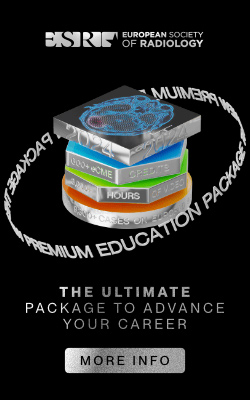- The medical imaging professionals characterization
A total of 65 medical imaging professional collaborated in the study (43,1% males and 56,9% females).
63,1% of the answers were given by radiographers (n=41) and 36,9% by radiologists (n=24).
Concerning the years of service (Figure 1) most part of the population concentrates within the range of 5 to 15 years of service, with the group ]5-10 years] corresponding to 33,8% of the population and the group ]10-15 years] corresponding to 23,1%.

Fig. 1: Radiographers and Radiologists years of professional activity.
References: School of Health Sciences (ESSUA), University of Aveiro - Aveiro/PT
When analysing the areas of expertise of medical imaging professionals, it was found that all the radiologists work in more than one medical imaging modality and all of them works on conventional radiography, computed tomography and ultrasonography. Concerning the performance of radiographers, 48,8% work in two or more medical imaging modalities (Figure 2).

Fig. 2: Distribution of the performed modalities by professional category.
References: School of Health Sciences (ESSUA), University of Aveiro - Aveiro/PT
During the information context analysis, several IS were identified that produce different types of data. For the purpose of this study, were referred those that contain information relevant for the radiologists and radiographers’ daily practice (Figure 3).

Fig. 3: Some of the information systems with relevant data for radiographers and radiologist’s performance in daily practice.
References: School of Health Sciences (ESSUA), University of Aveiro - Aveiro/PT
- The data quality analysis
Regarding the data quality, the results suggest that globally the information is considered good, with the exception of the data related to questions 3, 4, 5 and 6 (Table 1).

Table 1: Answers obtained (%) in each item of the evaluation scale, and for each of the questions, within the medical imaging studies requisition information quality assessment.
References: School of Health Sciences (ESSUA), University of Aveiro - Aveiro/PT
Table 2 presents the pertinent data missing and that was considered relevant. Technical difficulties in performing studies (93.8%) and patient collaboration degree (83.1%) were the most mentioned information needs.

Table 2: Results obtained from each of the questions regarding pertinent missing data
References: School of Health Sciences (ESSUA), University of Aveiro - Aveiro/PT
The inquired could also write their suggestions for information to be added. Some of the answers were related with: i) Patient gender and contact of a relative (Question 1), ii) Referring/ requesting physician speciality (Question 2), iii) Patient degenerative diseases, infection risk and patient location (Question 3), iv) Patient previous surgeries (Question 6), v) Information resulting from interaction with the patient (Question 8). Concerning questions 4 and 5 (patient clinical information and clinical question to clarify) the participants mentioned the fact that these fields were filled in incorrectly. Although these are required registration fields, not allowing to request the exam if they are empty, referring/requesting physicians often place, for example, a ”.” to be able to submit the study request.
Table 3 summarizes the information considered relevant and which should be accessible for professional practice.

Table 3: Information considered relevant but missing.
References: School of Health Sciences (ESSUA), University of Aveiro - Aveiro/PT
For those participants who answered that the information presented in Table 3 exists somewhere, they were asked if they knew where the information could be found. The results are presented in Table 4.

Table 4: Identification of the IS containing the information considered relevant to be part of the study requisition.
References: School of Health Sciences (ESSUA), University of Aveiro - Aveiro/PT
Analyzing table 4, and taking into account the 18 types of information that was considered pertinent, to be part of the study requisition (Table 3), we found that:
- Only 4 of those topics could not be found in any of the 4 systems that were presented at the beginning of the study;
- Excluding those 4 topics, only 2 of the topics could not be found in SClínico;
- 6 of the topics were present in more than 1 system.














